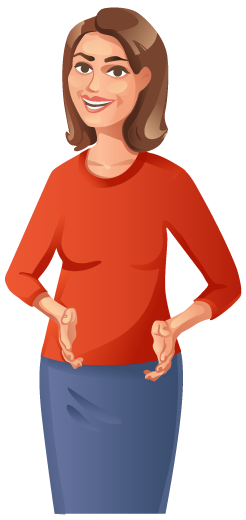Please use the slider bar below to see what your baby will see during their first 12 months.





At birth, your baby's vision is pretty fuzzy, although they can make out light, shapes and movement. Your baby will turn their eyes towards a window or another source of light. Your baby will also blink in response to sudden bright lights. You may notice your newborn's eyes wandering, as they hasn't yet learned that they can fix their eyes on an object.
Your baby can't see far, but that doesn't matter as your face is the most interesting thing to them anyway. And the chances are you'll be staying close to your baby in the first few weeks. When you cuddle your baby, make eye contact and give them time to study your features.
By the time your baby is one months old, he/she will have have learned to focus their eyes. This means they can follow a toy if you move it around in front of their eyes. If you pass a rattle in front of your babies face, it will transfix him/her.. Or you can play eyes-to-eyes by moving very close to their face and slowly moving your head from side to side. Your baby's eyes will lock on to yours.
Your baby can see colour, but they can't tell the difference between similar tones such as red and orange. Have a look for black and white or high-contrast coloured toys to capture their attention.
Colour differences are becoming clearer to your baby, and they start to distinguish between similar shades. Your baby may now prefer bright primary colours, and more detailed and complicated designs and shapes. Take advantage of this by showing them bright pictures, photos, books, and toys.
Around now your baby will begin to tell how far away something is from them. This is called depth perception. At the same time, your baby is gaining better control over her arms. Being able to see more accurately helps them to grab for things such as your hair or necklace, or toys within their reach.
Your baby will be getting better at examining objects closely and spotting small things. They may also be able to recognise an object after seeing only part of it.
Try this simple hide-and-seek game with your baby: Partially conceal their favourite teddy bear behind something nearby and ask your baby where teddy could be hiding. If he/she spots him, they may coo and point in delight.
Your baby may also mimic your facial expressions, so puff your cheeks up or stick out your tongue to see if he/she will copy you.
Your baby's vision is much clearer now, almost like an adult's, and they can see longer distances. Though their short-range sight is still better than her long-range sight, your babies vision is good enough to recognise people and objects across a room.
Your baby's eyes will also probably be close to their final colour, though you may see subtle changes in the coming months. Their vision is becoming sharper and your baby can pick out an object the size of a crumb. Your baby will probably be able to point at and demand objects nearby.
At 10 months your baby can tell the difference between near and far. Your baby will be able to recognise people they know approaching from a distance.
Your babies vision is pretty well fully developed and they can focus well between distance and near. Eye movements will be perfectly coordinated.
Although your babies eyes will have been checked at various stage during the first year at post natal visits by your Doctor or Health Visitor, there is a good argument to have your babies eyes fully checked at an optometrists at 12 months. Using sophisticated techniques, specific for babies, conditions like longsightedness and shortsightedness can be detected, and the health of your babies eyes can be checked.